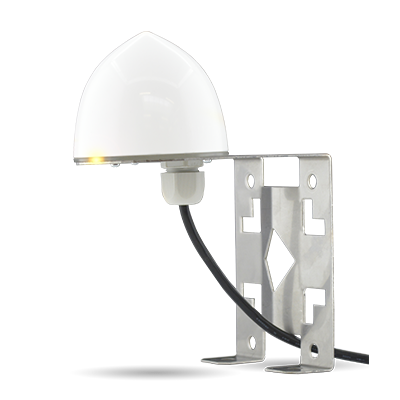Time synchronisation and distribution
Our expertise: distributing an accurate and identical time
Bodet designs and manufactures time synchronisation systems capable of providing a reliable and accurate time. Master clocks are responsible mainly for transmitting an identical time to a network of clocks. Time servers broadcast the time to all types of IT equipment.
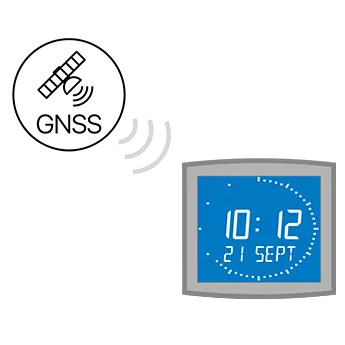
Time synchronisation: ensuring reliable and accurate time
Synchronisation ensures clock accuracy, and carry out the summer/winter time change automatically, while making significant savings on time resetting costs.
Worldwide, time synchronisation is carried out by a network of GNSS satellites. Satellites send the UTC time signal towards the Earth, and a GNSS antenna receives a time message every second and decodes it. The time server or primary clock receives the UTC message and broadcasts the local time according to the summer/winter time change of the country. The slave clocks are automatically set to the right time.
Our clocks can also be radio synchronised via a radio transmitter: DCF.
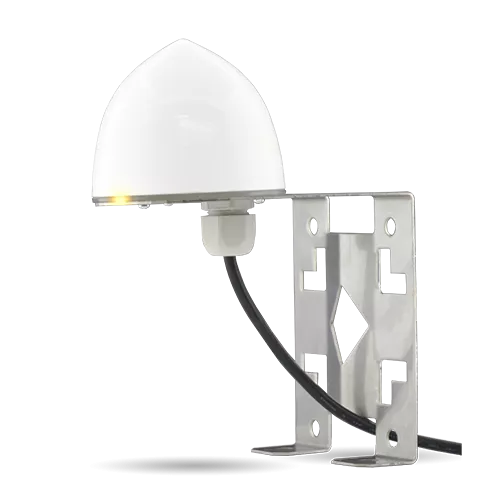
Our receiving antennas
Bodet offers a range of receiving antennas for ensuring time synchronisation of master clocks and time servers. We offer radio (DCF) and GNSS (GPS, Galileo, GLONASS, BeiDou) antennas.
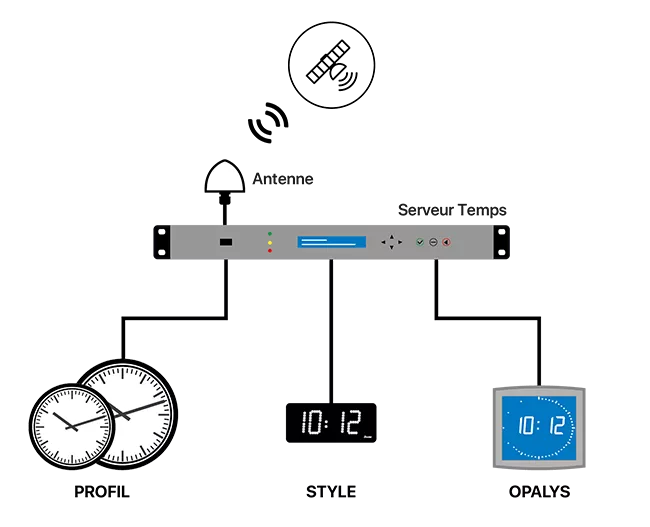
Why choosing a time distribution system?
Time distribution involves synchronising a network of clocks in one or several buildings using a master clock. For over 40 years, Bodet has been designing different time distribution systems guaranteeing reliable, accurate and identical time display on a set of clocks.
- Savings on clock commissioning.
- Reduction of maintenance costs.
- Increased productivity.
- Accurate and reliable display on all clocks.
- Automatic summer/winter time update.
Our time distribution systems

DHF wireless time distribution
Synchronising a network of clocks in one or several buildings without cable.
The slave clocks pick up the time message and are synchronised automatically. The signal has a range of around 100 to 200 metres.
Significant savings can be made during the installation, allowing great freedom of location.

Wired impulse
The master clock sends electrical impulses every minute to the slave clocks on a distribution line.
Power reserve available on the master clock to reset the clocks automatically in the event of a power cut.
The most economical system for small time distribution.

Wired coded time
Transmitting a comprehensive time message (time and date) over a two-wired line for 50 slave clocks maximum.
Standalone operation of the slave clocks if the signal is disconnected.
The system is ideally suited to large networks of clocks.

IP computer network
Synchronisation of clocks connected to the computer network via a time server.
Time distribution over a computer network is a standardised solution used to synchronise an unlimited number of clocks using two communication modes:
- NTP/Eth, wired
- NTP/Wi-Fi, wireless
This time synchronisation mode can also be used to supervise the clocks.

The UTC as international time reference
Formerly known as GMT, the UTC (Coordinated Universal Time) has been first introduced in 1960 by the International Radio Consultative Committee. This time standard defines all time zones used worldwide and regulates clocks and time. It is based on the Earth’s rotation and atomic clocks, making it an accurate and reliable time standard.
UTC makes international communication, navigation, scientific research and commerce easier. Bodet Time master clocks and time servers synchronise with UTC and distribute this time information to different devices.

Master clock or time server?
- Master clocks : distribute a reliable time to a network of clocks and allow for the configuration of bell, lighting, heating and access control systems.
- Time server : broadcasts a highly accurate and identical time information to the different devices of an information network (server, computer, access system via the NTP protocol. Our time servers offer different synchronisation formats for equipment with no Ethernet port (AFNOR, ASCII, 1 PPS, 10MHz...).
Our time synchronisation systems are recognised in the education, industry, transport, finance and the healthcare sector.
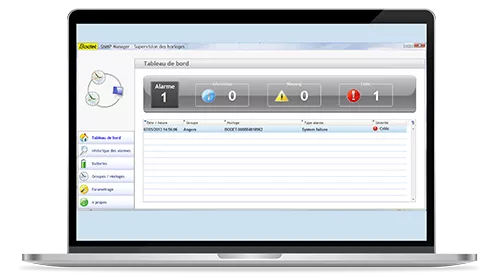
Clock supervision
Supervised time distribution operates with any SNMP-compatible software installed on a computer or a server. Supervised time distribution is a system capable to remotely configure, track the status and receive alerts from a set of clocks via the computer network.
This makes it possible to supervise clock operation from a central location and be informed of any incidents with the clocks of a network, as these can be installed across one or more sites:
- Knowing the functional status of supervised clocks in real time.
- Receiving alert messages or information sent by Bodet supervised clocks.
Supervised time distribution allows for reduction of maintenance costs by optimising technician travels. It is easy to use and a major asset for supervising a significant set of clocks or implanted across several sites.
